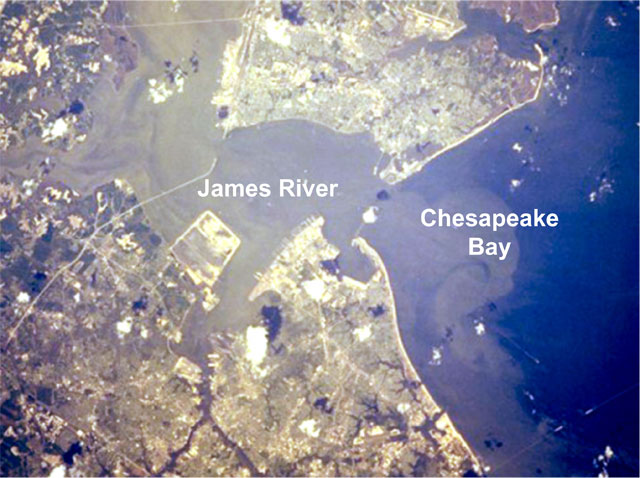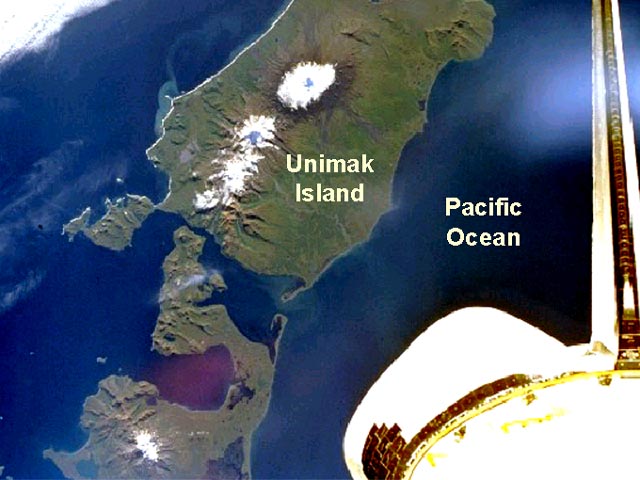
Principles of Plate Tectonics (Part 4)
The Wilson Cycle (continued)
Passive Margin
• The ocean basin widens. The continental margin, called a passive margin, cools and sinks. Thick geoclinal sediments pile up along the edge.

The Hampton Roads area of Virginia's Coastal Plain is typical of a continental passive margin. Passive margins are dominated by sediments and sedimentary rock, with a flat landscape, few earthquakes, and a lack of volcanoes. (Photograph courtesy of NASA)
The eastern seaboard of the United States is a modern example of a passive margin where sediments are accumulating. This satellite photograph shows the Hampton Roads area, where sediment from the James River enters the Chesapeake Bay. These sediments will contribute to the continental margin deposits.
Subduction
• The Wilson Cycle continues as the ocean basin eventually closes. Subduction occurs, and island arcs and deep ocean trenches form.

Unimak Island, is part of the Aleutian volcanic island arc chain in Alaska, and is where the Pacific Plate is subducting under the North American Plate. (Photograph courtesy of NASA)
This space shuttle view shows Unimak Island, one island in an island arc created from the subduction of colliding tectonic plates. Near Alaska, the Pacific Plate is being subducted under the North American Plate. Note the snow-capped volcanic peaks on the island.
Continent-continent Collision
• The continent eventually collides with another continent. Sediments along the continental margins are deformed and uplifted.

The Himalayan Mountains and the world's highest peak, Mount Everest (oval). (Photograph courtesy of NASA)
Where the Indian and Eurasian tectonic plates are colliding, the Himalayan Mountains have been pushed up. This satellite image shows Mount Everest (oval), the highest peak in the world. Fossil shells of animals that once lived in the ocean are found on Mount Everest.